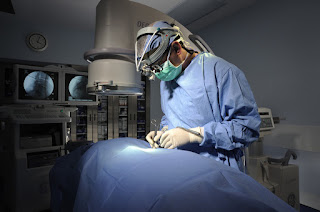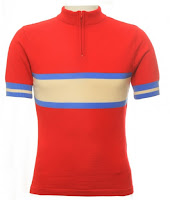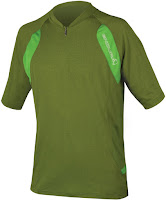 Ankylosing spondylitis, or AS, is a form of arthritis which affects parts of the spine. It is characterized by the chronic inflammation of the sacroiliac joints and the spine. This inflammatory condition can cause the ligaments, joint capsules, tendons and some of the vertebrae that attach to your spine, to swell.
Ankylosing spondylitis, or AS, is a form of arthritis which affects parts of the spine. It is characterized by the chronic inflammation of the sacroiliac joints and the spine. This inflammatory condition can cause the ligaments, joint capsules, tendons and some of the vertebrae that attach to your spine, to swell.Over time, the swelling can lead to formation of excess bone and perhaps the fusing (a complete cementing together) of vertebrae also. This fusing causes pain and makes the spine become less flexible and could result in a hunched-forward posture. The forward curvature of the spine is known as kyphosis or alkalosis and it causes loss of the spine’s mobility. In case ribs are affected, it can be difficult to breathe deeply.
Ankylosing Spondylitis can sometimes affect other joints and different parts of the body. There are also several conditions related to AS which have many similar symptoms. Sometimes the eyes may become involved (known as Uveitis or Iritis), and rarely, the heart and lungs can be affected.
Physical Conditions Characterized by AS
The hallmark feature of Ankylosing Spondylitis is the involvement of the sacroiliac joints (SI) during the progression of the condition. The sacroiliac joints are situated at the base of the spine/lower back where the sacrum (bone directly above the tailbone) of the spine meets the iliac bones (bones located on either side of the upper-buttocks) of the pelvis. Chronic inflammation in these parts causes pain and stiffness in-and-around the spine, including the back and neck. The cause(s) of this condition are not yet known, although there is notion to be a causal link with a particular gene called HLA-B27.The outlook for Ankylosing Spondylitis is highly variable. For some patients, the condition improves following an initial period of inflammation, while for others this condition may get progressively worse over time. Approximately 70% - 90% of patients with Ankylosing Spondylitis remain minimally disabled or even fully independent in the long term. But, there are people who eventually become severely disabled because the bones in their spine fuse in a fixed position and result in damage to other joints, like the hips or knees.
Who is Most Affected by Ankylosing Spondylitis?
Ankylosing Spondylitis can affect all age groups, male or female, old or young, including children, although it is more common in young men. It is 2 to 3 times more common in men compared to in women. In women, joints that are away from the spine are more often affected than in men. When it affects children, it’s known as juvenile Ankylosing Spondylitis. It’s most prone to begin in your late teens and 20s. AS is linked to the inherent genes but if your parents suffer from it it’s not clear-cut that you’ll develop it.When to Seek Medical Advice for AS?
You need to see your doctor if you’ve persistent symptoms of Ankylosing Spondylitis. They will ask about the symptoms you’re experiencing, when they began and how long you’ve had them. If your doctor thinks you may have this condition, they’ll refer you to a rheumatologist for further exams and any necessary treatment.How is Ankylosing Spondylitis Diagnosed?
A rheumatologist is commonly the physician who will diagnose AS, since they are doctors specially trained in diagnosing & treating disorders which affect the joints, muscles, bones, tendons, ligaments, and connective tissue. A thorough exam will entail x-rays, personal medical history, and also a family history of Ankylosing Spondylitis, as well as blood work that will include a test for HLA-B27. These are all factors involved in making a diagnosis.A physical examination will involve looking for sites of inflammation. Your doctor will check for pain & tenderness along your back, sacroiliac joints, pelvic bones, chest and heels. During the physical exam, a rheumatologist may also check for the restraint of spinal mobility in all directions and also for any restriction of chest expansion.
Blood testing
If your rheumatologist suspects Ankylosing Spondylitis, they may arrange blood tests in order to check for inflammation signs in your body. Inflammation in your joints and spine is one of the major symptoms of this condition. A blood test may sometimes show if there is inflammation in your body. You will possibly have one or more of the following tests:- Plasma viscosity (PV)
- Erythrocyte sedimentation rate (ESR)
- C-reactive protein (CRP)
- Antinuclear antibody (ANA) test, for looking for evidence of an auto-immune condition
- Rheumatoid factor, which rules out rheumatoid arthritis
- Complete blood count, so as to check for anemia, a complication of chronic inflammation
- HLA-B27, to see whether one has this genetic marker
Your rheumatologist can carry out imaging tests in order to examine the appearance of your pelvis and spine. These are described below.
X-Rays
As the condition develops, an X-ray of your spine/lower back can show changes or damage to the sacroiliac joints and new bone-forming between the vertebrae, which are common signs of advanced Ankylosing Spondylitis. X-rays are NOT always helpful in the early stages.MRI Scan
Another option is to use magnetic resonance imaging (MRI) scan to check for sacroiliac (SI) joint involvement. A MRI scan may highlight damage in your sacroiliac joints which might not show up on an X-ray. It could also show any inflammation of the-ligaments in the spinal region.Ultrasound Scan
This can pick up inflammation of your body tissues (ligaments and tendons) attached to the bones.Genetic Testing
A genetic blood test can confirm whether one has the HLA-B27 gene, found in most people with AS. Over 95% of Caucasian patients with Ankylosing Spondylitis test positive for the HLA-B27 marker.Treatment of Ankylosing Spondylitis
Currently, there’s no known cure for Ankylosing Spondylitis, but there are treatments and medications available to manage the pain and swelling, and also reduce symptoms. In most cases, Ankylosing Spondylitis treatment will entail a combination of:- Physical exercises carried out in groups or individually to reduce pain and stiffness.
- Medication to help relieve pain and ease inflammation – like painkillers and a type of drug known as anti-TNF medication; NSAIDs (nonsteroidal anti-inflammatory drugs) and second line medications (also known as next stage of medications called DMARDS (disease modifying anti-rheumatic drugs) such as Sulfasalazine, Methotrexate and Corticosteroids treat the pain and stiffness linked to spondylitis.
- Physiotherapy – whereby physical methods, like massage and manipulation, are employed to improve comfort as well as spinal flexibility. It also involves applying heat to tight muscles and stiff joints to help reduce pain and soreness. Also, applying cold to inflamed parts can help reduce swelling. Showers and hot baths can also help offer relief.

Alternative treatment options such as massage and use of a TENS unit (electrical stimulator for pain relief) can also be considered. Maintaining a balanced diet and healthy body weight can also aide in treatment of Ankylosing Spondylitis.





